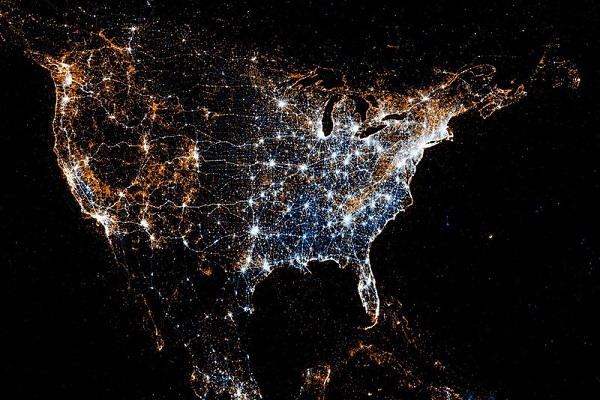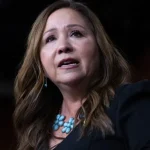
–>
June 9, 2023
Ever hear of the Build Public Renewables Act (BPRA)? Sounds great, doesn’t it? Yet, like “The Inflation Reduction Act” (the largest climate legislation in government history), its title has very little to do with its actual purpose. Its true objective is to empower the state (in this case New York) “to provide clean energy if the private sector fails to.”
‘); googletag.cmd.push(function () { googletag.display(‘div-gpt-ad-1609268089992-0’); }); document.write(”); googletag.cmd.push(function() { googletag.pubads().addEventListener(‘slotRenderEnded’, function(event) { if (event.slot.getSlotElementId() == “div-hre-Americanthinker—New-3028”) { googletag.display(“div-hre-Americanthinker—New-3028”); } }); }); }
Still sounds great! There is, however, one little catch: the private sector has until 2030 to provide clean energy. We all know that, given today’s technology, the private sector isn’t going to meet this requirement — which means that the second little catch will kick in: the moving of power utilities out of private hands into publicly owned facilities. In fact, BPRA, now in the New York state budget, is viewed as a massive challenge to fossil fuel hegemony and a major victory for public power. The BPRA requires and empowers the New York Power Authority (NYPA) “to rapidly build renewable energy infrastructure to meet the goal of 100 percent clean energy by 2030.”
Except for the 100% clean energy part, still sounds pretty good. But here’s where the act begins to cause concern. The BPRA is laying the foundation for a socialized electrical grid. This from the Democratic Socialists of America (DSA) themselves. “A socialist strategy would put unions, industrial expertise, and clean energy writ large at the center of the bill,” begins this article. “New York is moving closer to public ownership and operation of renewable power,” says this article.
The act requires that all state-owned properties that currently receive power from the NYPA utilize only renewable energy by 2030. It also requires municipally owned properties, including hospitals, schools, public housing, and public transit, to switch to renewable energy by 2035. The act calls for NYPA, which built six natural gas–fired “peaker plants” in 2001 to meet energy demands during peak times, such as the hottest days of summer and coldest days of winter, to phase them out.
‘); googletag.cmd.push(function () { googletag.display(‘div-gpt-ad-1609270365559-0’); }); document.write(”); googletag.cmd.push(function() { googletag.pubads().addEventListener(‘slotRenderEnded’, function(event) { if (event.slot.getSlotElementId() == “div-hre-Americanthinker—New-3035”) { googletag.display(“div-hre-Americanthinker—New-3035”); } }); }); }
The act further directs the NYPA (founded in 1931 by Franklin D. Roosevelt, it was designed to provide low-cost electricity across New York state) to plan, build, and operate renewable energy projects across the state to meet the ambitious timetable to decarbonize the grid mandated by the Climate Act of 2019.
When investors own utilities, profits go to shareholders. But for publicly owned utilities, profits are reinvested in utility operations, usually resulting in lower energy rates and energy bills. Or so said Lee Ziesche, organizer with Public Power New York (PPNY), a coalition that has been trying to pass the legislation for four years. Ziesche failed to mention that the latter model also places energy consumers at the mercy of the inevitable regulation board that’s inevitably made up of people who are friends of the governor. “Board” is a euphemism for a primary tenet of socialism: central planning, which is the function of command administered on behalf of an ideology purported to serve the broad masses of the population. Boards have a long history of doing just the opposite and serving their own interests. Result: Only board members and their cronies will run their air-conditioners on the hottest days and heaters on the coldest days.
The board is coming. A portion of the NBRA bill intended to expand the NYPA board (appointed by the governor) to include members from labor and environmental justice groups did not make the final provision. Next session?
And speaking of boards, BPRA opens the door for two more. In the act is the requirement for NYPA to provide 100% renewable energy to “low-to-moderate income” residential customers at a price 50% cheaper than what their local commercial utilities can provide. A board will have to be appointed to determine who qualifies as a low- to moderate-income residential customer. And there’s a requirement for the NYPA to serve “disadvantaged communities,” an imprecisely defined legal term that’ll require yet another board to define.
PPNY was organized by the eco-socialist working group of the NYC DSA chapter to protest a rate hike request from the private utility ConEd. In February of this year, the cost of natural gas nationwide had increased by 24% over the year prior. Of the increase, Aaron Eisenberg, part of the PPNY coalition, said, “It was ratepayers who were caught in the lurch. Putting renewables on the grid in New York state makes us less dependent on gas and ensures we have a reliable source of energy provided by a trusted source that’s been around for 90 years.” He cited the price increase as the need for the act but neglected to mention that the cause for the increase was Biden’s energy policy. He’s a typical socialist.
The National Review columnist Liza Featherstone wrote, “It’s easy to underestimate what a big step that is in a country that has overwhelmingly adopted a privatized model of energy generation. The bill is therefore seen by proponents and detractors alike as a possible foundation for socializing and centralizing control of all energy in order to effectively address the climate crisis and keep energy affordable and accessible to all. It provides a way of ensuring that public interest, rather than the profit motive, dominates energy generation.”
‘); googletag.cmd.push(function () { googletag.display(‘div-gpt-ad-1609268078422-0’); }); document.write(”); googletag.cmd.push(function() { googletag.pubads().addEventListener(‘slotRenderEnded’, function(event) { if (event.slot.getSlotElementId() == “div-hre-Americanthinker—New-3027”) { googletag.display(“div-hre-Americanthinker—New-3027”); } }); }); } if (publir_show_ads) { document.write(“
So what? This applies only to the state of New York. Most of us could not care less what New York does to itself.
The reason we should care is twofold.
First, this act serves as a model for the other 49 states. Today New York; tomorrow other states. “It’ll create a model of public power for the whole country, and it’s really showing that our energy should be a public good,” said Ziesche (emphasis mine).
Second, its naked socialism will appeal to 49% of misguided younger citizens and a majority of Democrats. According to Gallup, 57% of Democrats and their leaders have a positive view of socialism.
Jenny Beth Martin wrote, “The typical graduate of the typical four-year college in this country thinks better of Fidel Castro, Che Guevara, and Ho Chi Minh than he or she does of Ronald Reagan. They simply do not know, or understand, that socialism is but one step removed from communism, and communism kills. Ask the survivors of Pol Pot’s Cambodian killing fields (where upwards of two million out of a population of just eight million were killed), or the survivors of Stalin’s purges (where upwards of 20 million were killed) what they think of communism and its ‘softer’ cousin, socialism.”
Martin continued, “The Democrats (and Democrat leaners) who said they have a positive view of socialism clearly do not understand the link between economic freedom and political freedom. History shows you simply cannot have one without the other. That’s why the United States was able to leapfrog over the older, more established, more socialistic nations of Europe to become the world’s dominant power in the middle of the last century.”

Image: Eric Fischer via Flickr, CC BY 2.0 (cropped).
<!–
–>
<!– if(page_width_onload <= 479) { document.write("
“); googletag.cmd.push(function() { googletag.display(‘div-gpt-ad-1345489840937-4’); }); } –> If you experience technical problems, please write to [email protected]
FOLLOW US ON
<!–
–>
<!– _qoptions={ qacct:”p-9bKF-NgTuSFM6″ }; ![]() –> <!—-> <!– var addthis_share = { email_template: “new_template” } –>
–> <!—-> <!– var addthis_share = { email_template: “new_template” } –>





